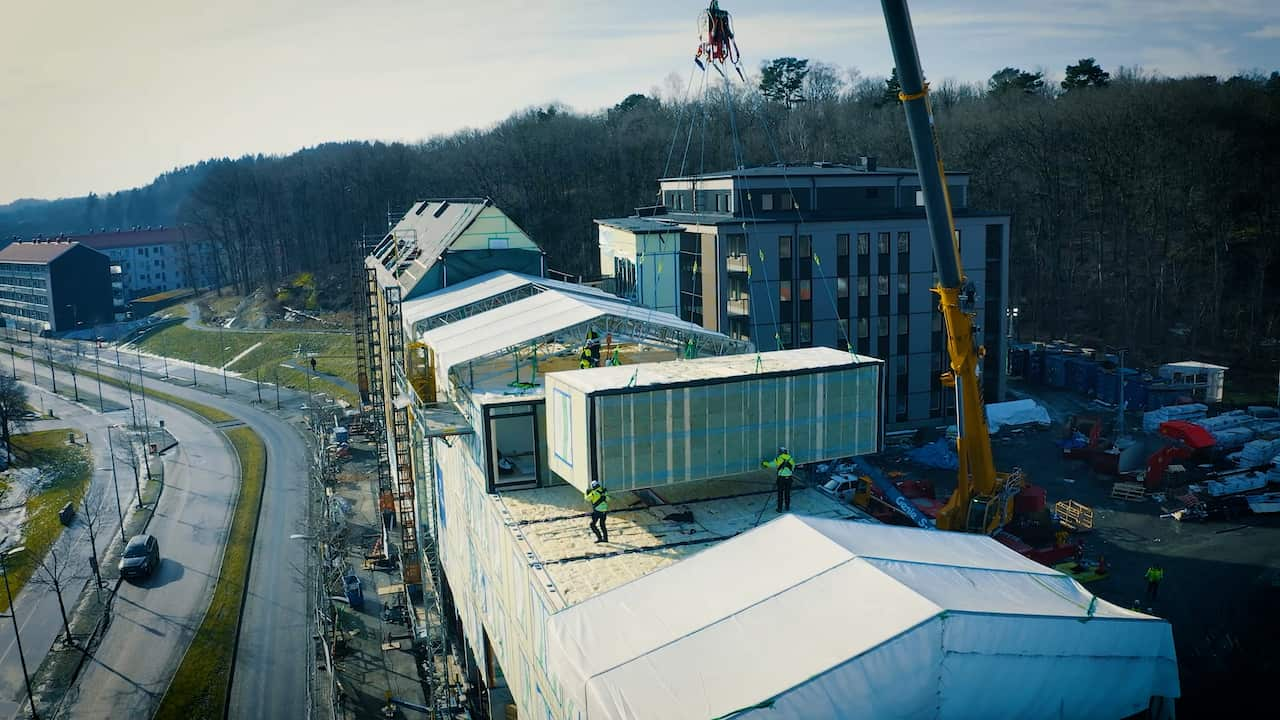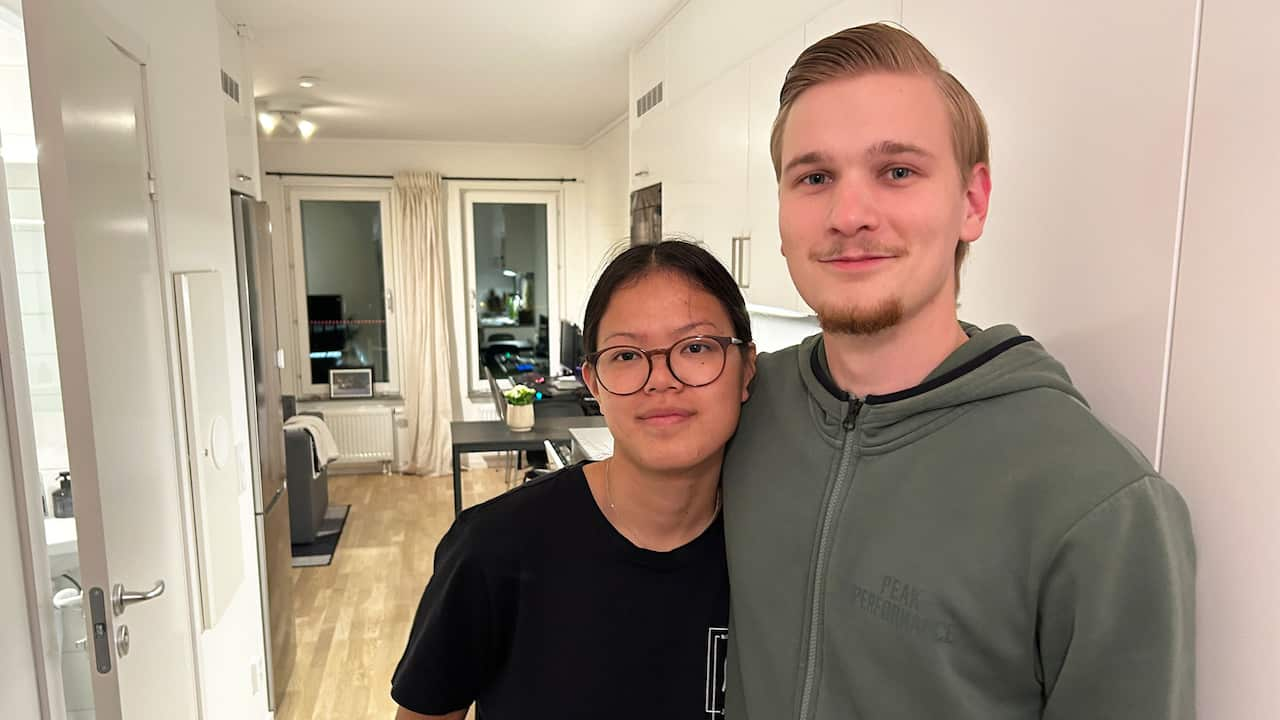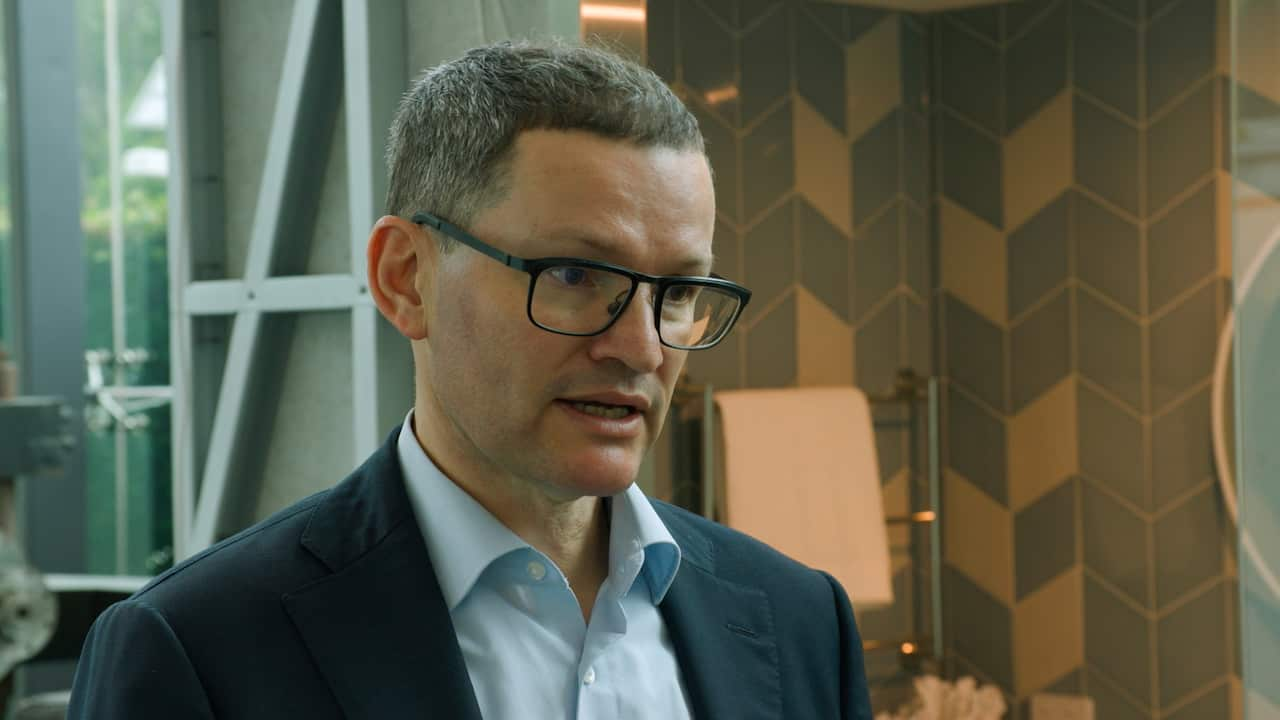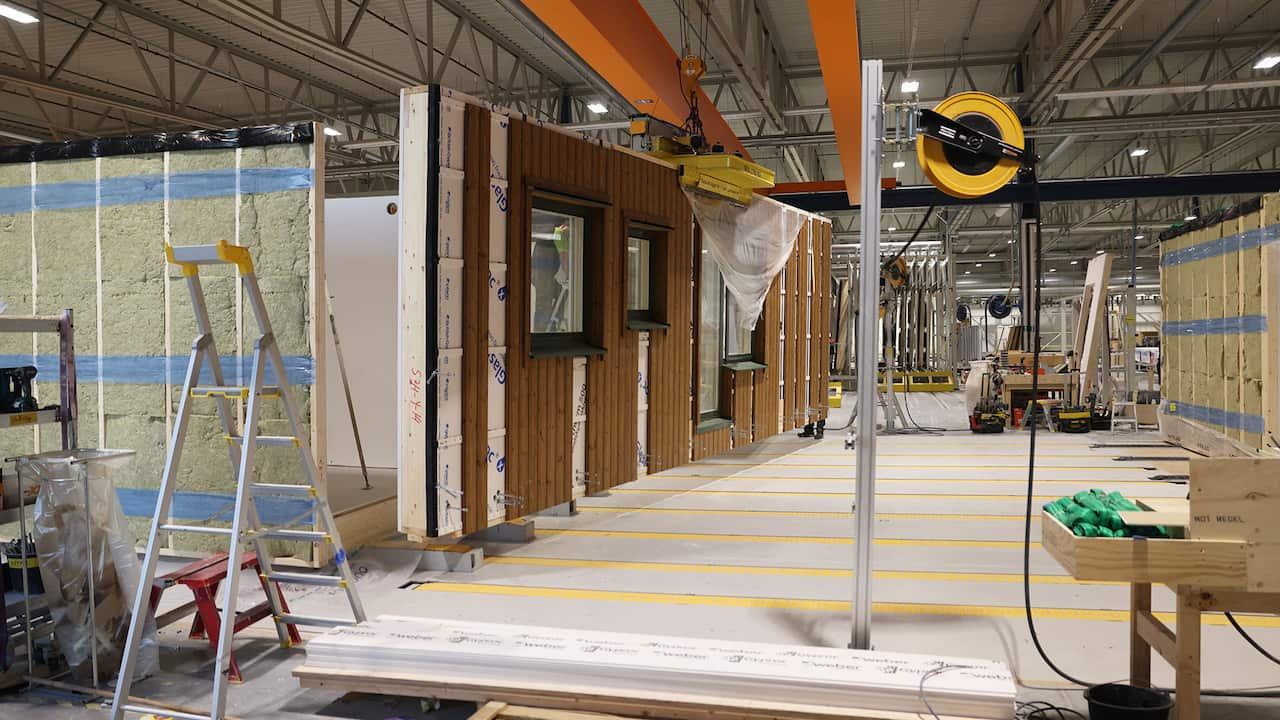Dateline’s latest episode looks into Sweden’s prefabricated houses and whether they can be the answer to Australia’s housing supply crisis. Watch Sweden’s Flatpack Homes 8 April at 9.30pm on SBS or SBS On Demand.
Perched on a cliff overlooking the Baltic Sea, Swedish couple Rickard Rundqvist and Mattias Borg’s home looks like it was pulled from the pages of an architecture magazine.
With floor-to-ceiling windows, exposed timber, and minimalist decor, it’s peak Scandinavian aesthetic: simple and functional.
But what makes this 70 square-metre one-bedroom house with a sauna even more remarkable is that it was built in six days – using a construction process called prefabrication, or prefab, where all or parts of a structure are built in a factory and brought on-site for assembly.
“We had to do some interior stuff like the bathroom and the kitchen,” Mattias says. “But pretty much the house was there: the windows, the roof, everything.”
Rickard Rundqvist and Mattias Borg’s home is a 70-square-metre one-bedroom, one-bathroom house with a sauna overlooking the Baltic Sea. Source: SBS / Colin Cosier
Historically, prefab has had bad rap. In Australia, it’s often associated with school demountables and mining dongas. And while the process can be thought of as low-quality and unoriginal, Rickard and Mattias say their home was designed to reflect their vision in collaboration with architects at the construction firm.
“This is totally custom-made from our drawings,” Mattias says.
“People think that the prefab house is, you have to pick it from a catalogue. But it’s not actually, it’s just a way to construct it, which is much more efficient.”
Although the couple doesn’t disclose the total costs, they say they did save money because less labour was involved.
“I think it’s just the most practical way of doing it. [We saved] time and money, [it was] way more cost efficient,” Rickard says.
House factories
Like Australia, Sweden is in a housing crisis, with a lack of supply at the root of the issue.
Soaring house prices are pushing home ownership out of reach for many, forcing more people into an overcrowded rental market.
High demand for housing has fuelled a boom in prefab construction — seen as a faster and more efficient way of building new homes.
Across the country, so-called ‘house factories’ churn out up to four apartments a day, equipped with insulation, electricity and plumbing and ready for assembly on site.
Across Sweden, so-called ‘house factories’ build four apartments a day, equipped with insulation, electricity and plumbing and ready for on-site assembly. It takes a few months to put together an apartment building. Source: SBS / Colin Cosier
Modelled off the car industry, the factories have their operations centred around one main production line, with robots working alongside humans for speed and efficiency.
It’s estimated 90 per cent of houses and 20 per cent of multi-story apartments in Sweden are built with timber using the prefab method.
In Sweden, where 70 per cent of the territory is covered in forest, timber is championed as a climate-friendly alternative to other building materials such as steel and concrete.
“When we’re talking wood today, we’re talking mass timber, or engineered timber,” architect Oskar Norelius says.
Norelius is leading an ambitious project, Wood City, a new residential district in the south of Stockholm with 2,000 apartments and 7,000 office spaces as well as restaurants, retailers, and supermarkets — all being built using prefabrication.
He says engineered timber, a type of manufactured material made by layering wooden boards in different directions, is lightweight, fire-resistant and gives structural strength to the building.
“It’s a good material, it’s very lightweight, it’s quite easy to work with in a factory,” he says.
‘We were able to land one’
Twenty-four-year-old Kilian Schott and 20-year-old Maja Blomgren have recently moved into their rental – a small studio apartment on the outskirts of Stockholm.
The couple was living with Maja’s parents and thought it would take them years to find an affordable home of their own. But then came an influx of prefab apartments in their desired area.
A young couple Maja and Kilian were able to secure a rental studio in a new apartment complex that was built in ten months using the prefab method. Source: SBS / Colin Cosier
Their complex is made up of 96 apartments, all built in a factory.
It took just eight weeks to assemble each apartment on-site. The entire build — from factory to finish — took ten months.
“There were I think 60 apartments published at once. And since they did not have 60 people applying for them, they took all of the possible tenants and gave them the opportunity to rent these apartments,” Kilian says.
Can Australia build the Swedish way?
Australia’s housing crisis is also driven largely by a lack of supply. How we build our future is a hotly debated election.
The federal government says Australia will need 1.2 million new homes in the next five years, and there is growing recognition of the potential benefits of prefab.
In its latest budget, Labor pledged almost $50 million dollars to support modular home construction. State governments are also throwing money at the industry.
Professor Mathew Aitchison from Monash University heads Building 4.0 CRC, a research centre co-funded by the federal government. Its goal is to get Australia to build homes better, faster and cheaper.
He believes prefab is one solution but says it’s not without its risks.
“If you want to make a prefabricated housing business, it does require a large amount of capital to set it up. It requires planning, it requires knowledge of manufacturing, and that can take some time.”
Mathew Aitchison of Monash University says there are many lessons Australia can learn from Sweden in prefab construction. Source: SBS / Colin Cosier
And he says, to be both profitable for businesses and affordable for consumers, you need to build at scale.
“It is possible to build anything prefabricated, but it’s going to cost a lot more money if it’s a one-off. The value you get from prefabrication is when you have high volumes being churned out in factories.”
And in Australia, that won’t happen overnight.
“We don’t have the same history and culture of manufacturing that the Swedes do. I think we also have to acknowledge that [the house factories] have been developed over decades.”
There are other hurdles too, he says. Banks aren’t properly set up to loan people money for offsite construction projects and building regulations will likely need an overhaul.
Prefab makes up less than 10 per cent of construction in Australia, according to prefabAUS, the peak body for the off-site construction industry.
But Aitchison says momentum is building.
“There is a lot of interest in [prefab] in Australia at the moment and that’s coming from industry and government. There are many lessons we can learn from Sweden, and I think the future of construction is a future of industrialisation.”
Prefab makes up less than 10 per cent of construction in Australia, with bathroom pod manufacturing being the most developed part of the industry. Source: SBS / Colin Cosier
Speaking from a modular bathroom factory on the NSW Central Coast, where they make around 16 bathrooms a day, Aitchison says it’s this type of prefab that is taking off.
“I would say bathroom pod manufacturing is perhaps the most mature part of Australia’s prefab industry,” he explains.
“Instead of having teams working for weeks on a building site at level 25 in downtown Sydney, they can do all of the work here in a factory and drop this pod in [an apartment] in a single day.”
Aitchison doesn’t think a mega house factory, like those in Sweden, would work in Australia. He’d rather see the industry embrace the idea of smaller factories that specialise in different elements of a home.
“[Prefab] can be what we want it to be. So, to me, speeding up that building time using less materials, less waste, less labour – that’s innovation.”











